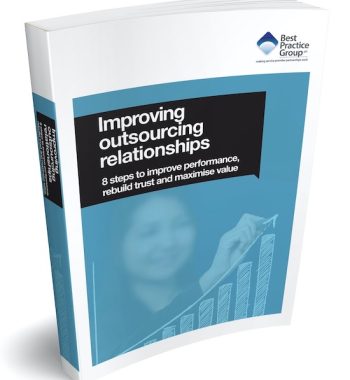Last week we explored the differences between important and urgent issues in service provider relationships, and how to effectively shape your daily work hours to minimise preventable urgent issues.
we explored the differences between important and urgent issues in service provider relationships, and how to effectively shape your daily work hours to minimise preventable urgent issues.
In the long run, following our advice should not only make your workflow far more efficient, but also reduce the amount of time you find yourself firefighting the often (but not always) inevitable urgent issues.
But what if you find yourself overwhelmed by your workload, regardless of how efficiently you manage important and urgent issues? Although prioritisation of tasks is a good idea at the best of times, its importance increases as the weight on your shoulders becomes heavier.
With that in mind, I want to take the opportunity to reveal a tool that we use to prioritise workflow, with the ultimate aim of effectively managing and/or recovering major service provider relationships.
Service Provider Relationships: What To Do?
You should already have a good grasp of the important and urgent issues that you are faced with. If not, start with last week’s article before moving on to this. In addition, you should have a clear grasp of your business outcomes – your long term goals.
Then it is time to apply your workflow to what we call the Urgent/Important Matrix. We certainly do not take the credit for this system, which is often attributed to Dr. Stephen Covey (author of the iconic self-development book, The 7 Habits of Highly Successful People).
The matrix is a highly effective way to prioritise issues once you have determined the business outcomes you are trying to address. It helps you sanity-check the natural tendency to focus on urgent issues without thought for the bigger picture. This will lead to a healthy service provider relationship in the long run, marked by improvements in service delivery, cost cutting, and innovation.
The alternative is a (possibly irreparably) damaged service provider relationship – not an ideal outcome.
The Urgent/Important Matrix

The above diagram effectively lays out the urgent/important matrix, but we will need to go into more detail in order to extract its true value.
But first of all, a caveat. We are approaching the matrix from a very general perspective in this article. We would normally apply the matrix according to the specific circumstances of the service provider relationship that we were helping our client to improve.
With that said, let’s go through the step by step process for applying your workflow to the matrix:
- Begin with the assumption that all issues are of equal importance. You should initially approach this process from an objective standpoint.
- List the specific business outcomes that you believe you are having difficulty in achieving.
- Order these outcomes according to the priorities of your department/business.
- List all of the issues aligned to those priorities that you believe you need to address.
- Apply a score (1 to 5 in smaller projects, 1 to 10 in larger projects) to each issue in terms of how closely they align with your primary business outcomes.
- Now establish your gut feel on the urgency of each issue and activity and compare that with your prior assessment.
- Plot the issues and activities on the matrix according to the importance and urgency you have assigned to them.
- Review the matrix with a clear head in order to prioritise what issues and activities you should address, and in what order.
What Important and Urgent Truly Mean
You may be surprised by the outcome of this exercise. It may well be that issues you previously thought to be a number one priority actually pale in comparison to other activities that are far more aligned to benefiting your long term business outcomes.
The matrix allows you to assess your workflow more objectively and step away from the temptation to immediately address what seem to be the most apparently urgent issues.
But remember – in this article I have remained general in my recommended approach. If you want specific examples according to the issues you are experiencing with your service provider, please feel free to contact us so that we can discuss the specifics of how the matrix can be effectively applied to your own situation.
Creative Commons photo courtesy of Banalities

